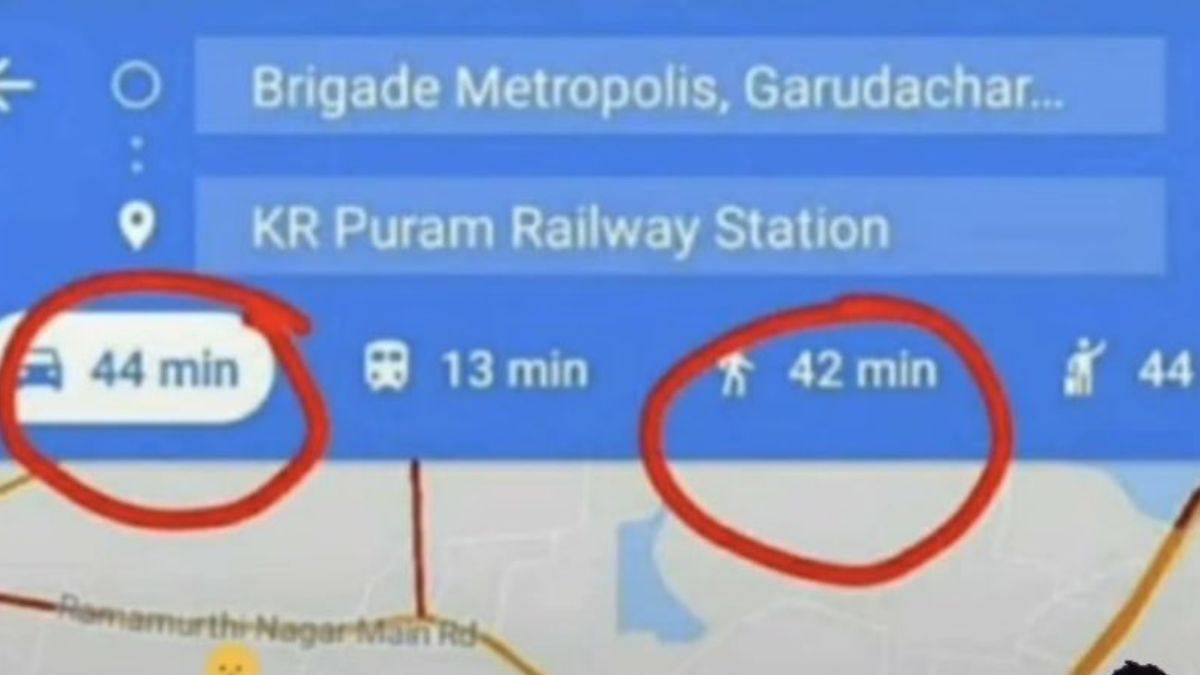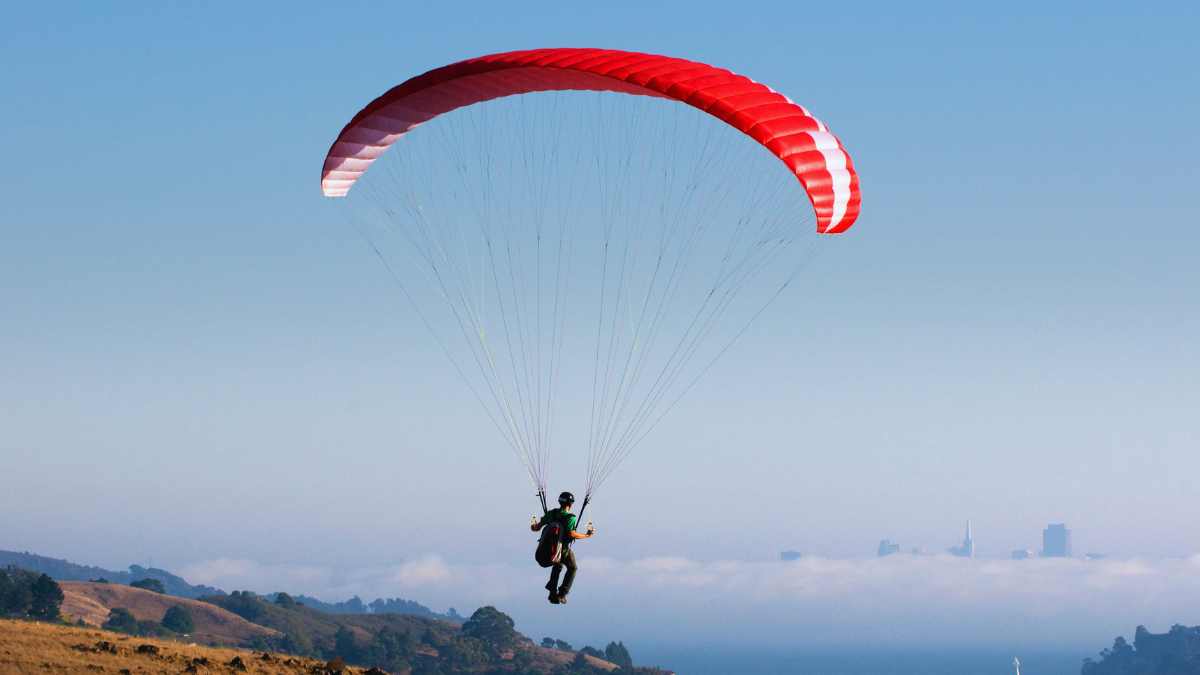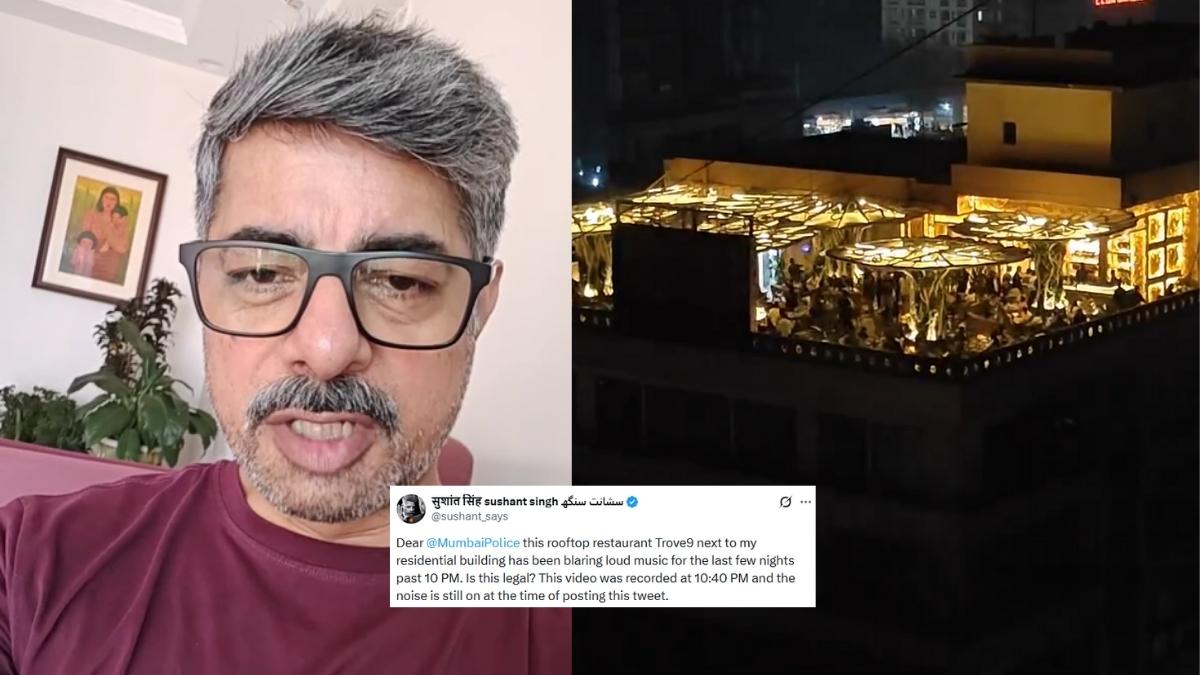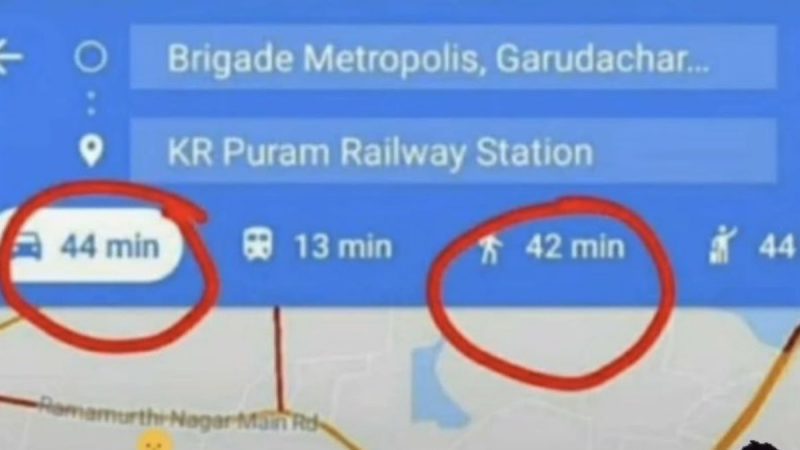Bengaluru, India’s tech hub, is increasingly becoming notorious for its crippling traffic congestion. A recent revelation has sent shockwaves through the city: Google Maps is suggesting that it might be quicker to walk than to drive in certain areas in Bengaluru’s traffic.
Google Maps In Bengaluru’s Traffic
This happens only in Bangalore pic.twitter.com/MQlCP7DsU7
— Ayush Singh (@imabhinashS) July 25, 2024
One user, Ayush Singh, shared his bewilderment on social media. Travelling from Brigade Metropolis to Krishnarajapuram Railway Station, a distance of 5.8 kilometres, Google Maps estimated a 44-minute journey by car and a mere 42-minute walk. This stark contrast has ignited discussions about the city’s traffic woes.
The situation is not isolated. Numerous residents have echoed Singh’s experience, sharing their frustration with the city’s traffic gridlock. While Bengaluru has witnessed significant growth in recent years, its infrastructure has struggled to keep pace. The result is a city choked by vehicles, leading to travel times that defy logic.
Also Read: Bengaluru’s Online Auto Fares Continue To Soar Despite High Court Ruling On Capping Prices
A City Choked By Vehicles

Experts attribute this phenomenon to several factors. The rapid increase in car ownership, coupled with a poorly planned public transport system, has exacerbated congestion. Moreover, the city’s infrastructure, including roads and flyovers, is often inadequate to handle the traffic load. The situation is further compounded by factors such as unplanned urbanisation and a lack of enforcement of traffic rules.
While the situation appears bleak, there is hope. The government has acknowledged the problem and has initiated steps to improve public transport. Metro rail expansion is underway, and the authorities are also focusing on developing a robust bus rapid transit system. Additionally, there is a growing emphasis on non-motorised transport, with dedicated cycling and pedestrian lanes being created in some areas.
However, addressing Bengaluru’s traffic crisis requires a multi-faceted approach. It necessitates not just infrastructure development but also behavioural changes. Encouraging the use of public transport, carpooling, and promoting a culture of walking and cycling are crucial. Furthermore, strict enforcement of traffic rules is essential to deter traffic violations.
Also Read: What is GNSS? Bengaluru-Mysuru Expressway To Get This Toll Collection System Soon
Until then, Bengaluru’s residents will continue to grapple with the daily ordeal of commuting. The fact that walking might be a faster option than driving is a stark reminder of the city’s traffic woes and the urgent need for sustainable solutions.
Cover Image Courtesy: @imabhinashS /X (Formerly, Twitter)
For more such snackable content, interesting discoveries and the latest updates on food, travel and experiences in your city, download the Curly Tales App. Download HERE. First Published: July 26, 2024 5:03 PM




